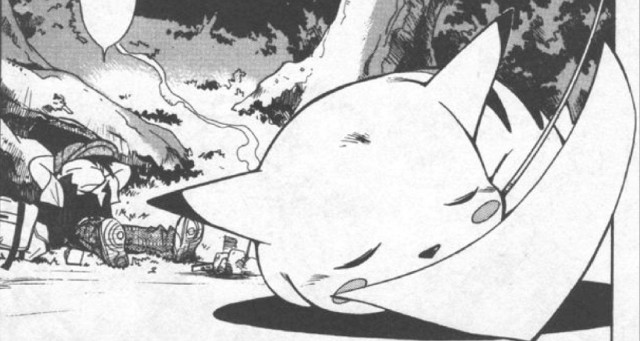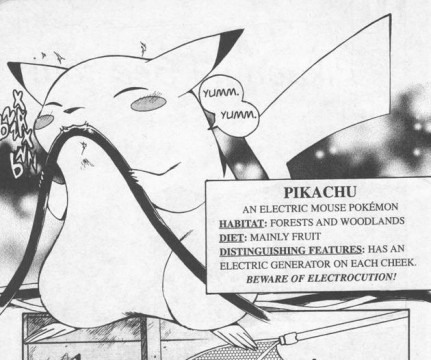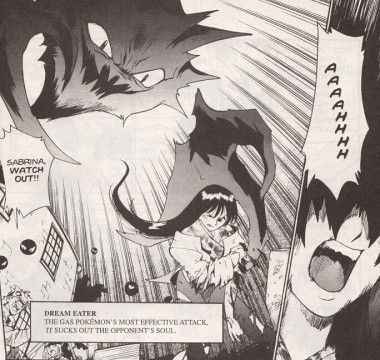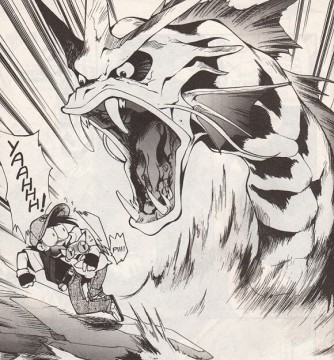Many Pokémon fans got their start with the games, the trading card game, or the anime series. Having been a comic fan most of my life, however, I was introduced to Pokémon through the comics, published by Viz Publications. While it was Pokémon Red that forever cemented my love of the franchise, the comic gave me my first exposure to the world that would come to be known as Kanto. As a result, the art of Toshihiro Ono played as pivotal a role in immersing me in the experience as Ken Sugimori’s did.
Toshihiro Ono’s Pokémon comic was an interesting title. Partially based on the anime, Pokémon: The Electric Tale of Pikachu was targeted toward a slightly older demographic. Ono expanded on the concept of the anime and Game Boy games, adding new details and making Kanto seem more technologically advanced. The book took slightly darker turns from the anime, as well; Ash’s Pokémon League Battle with Richie erupted into a violent brawl between two Charizards. As blood spilled in the stadium, Ash had to make a difficult decision. The writer/artist even gave readers a crash course on Pokémon in the very first first issue, when Ash had to pass a test in order to receive a license to train Pokémon. It was a strong narrative choice, as it introduced readers to the franchise basics right from the start. As an introduction, it worked better than the first episode of the cartoon, in this regard.
While Ono’s interpretation of the world of the games was memorable, the most interesting thing about the comic was the way Ono drew the Pokémon themselves. In the early days, the 8-bit sprites from Pokémon Red and Blue allowed for some leeway and artistic interpretation. These days, Pokémon look a very specific way. After six generations of main series games, the graphics have gotten better and the characters have become much more clearly defined. Not to mention the number of Pokémon spin-off games, anime episodes, TCG expansions, and merchandise that have been released over the last 20 years! In the infancy of the franchise, however, many of Ono’s Pokémon designs were quite a bit different from the way fans would eventually come to see them.
One of Ono’s most notable Pokémon interpretations is Ash’s Fearow. As far as the official Nintendo design is concerned, Fearow tends to be a bit of an intentionally ugly bird. But the way Ono drew the character, coupled with his vague appearance in Red and Blue, made the creature look much more majestic. With some softer edges and coloring, the Pokémon actually looked pretty. Because of Ono’s take on the character, my first encounter with Fearow in Pokémon Red was almost as exciting as the first time I discovered Pikachu. The comics made the flying-type Pokémon one of my early favorites.
Ono was also very good at making stronger Pokémon seem much more intimidating. While Pokémon like Fearow got a bit prettier, creatures like Haunter got scarier. With a jagged mouth, Ono’s version of the Pokémon seemed to take inspiration from Japanese horror. It also provided an intimidating foe for Ash and his companions. Gyarados is another example. The Pokémon looks unmistakably like it does in the games, but the more fearsome features have certainly been exaggerated.
As much as I love how far games and their graphics have progressed in my lifetime, it often saddens me that we’ve lost some of the room for artistic interpretation we once had. Toshihiro Ono’s art is just one example of the freedom many artists once had in regards to interpreting video games. When games were 8- and even 16-bit, there was a bit more freedom offered to the artists that worked outside the games themselves. Artists were tasked with looking at fuzzy graphics and coming up with the way the characters “really” looked. Sometimes these takes were inconsistent, but the imaginations of these artists helped to define the way we saw early video game characters. With its release in 1996, Pokémon is essentially the last major franchise to come out of the 8-bit era. While the designs of characters from any franchise will evolve through the years, there likely will never be another franchise evolution on that same scale. It’s one of the things we’ve lost as we approach the graphic ceiling.
For me, Toshihiro Ono’s art is one of the most memorable parts of my early exposure to Pokémon. It helped define the world I would become so immersed in, and it’s still the way I see it after all these years. Unfortunately, the comics have been out of print for some time now, and Viz Media currently has no plans to reprint them at this time. The company continues to publish new Pokémon comics, however, so maybe one day, new trainers will find themselves as influenced by Ono’s art as I was.




 ShareThis
ShareThis









